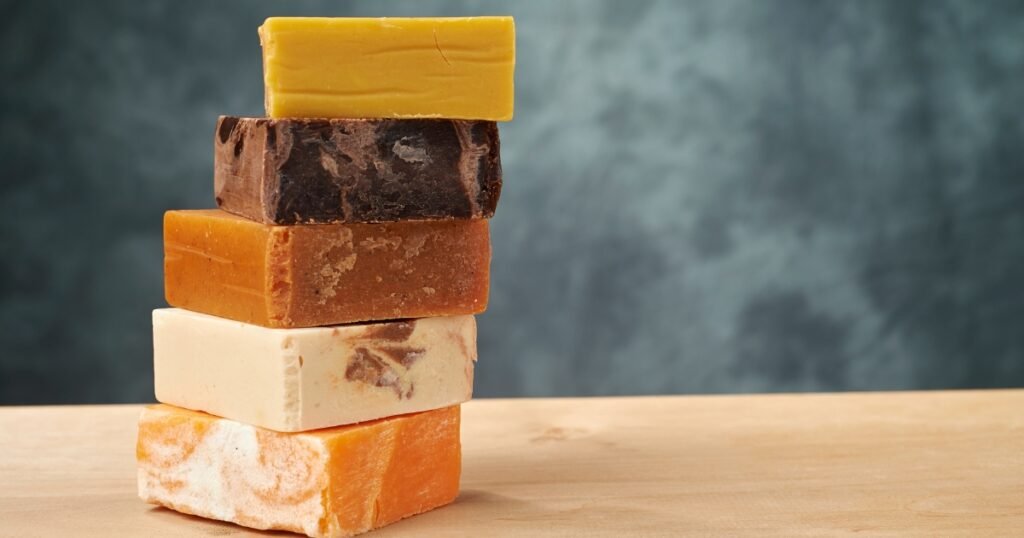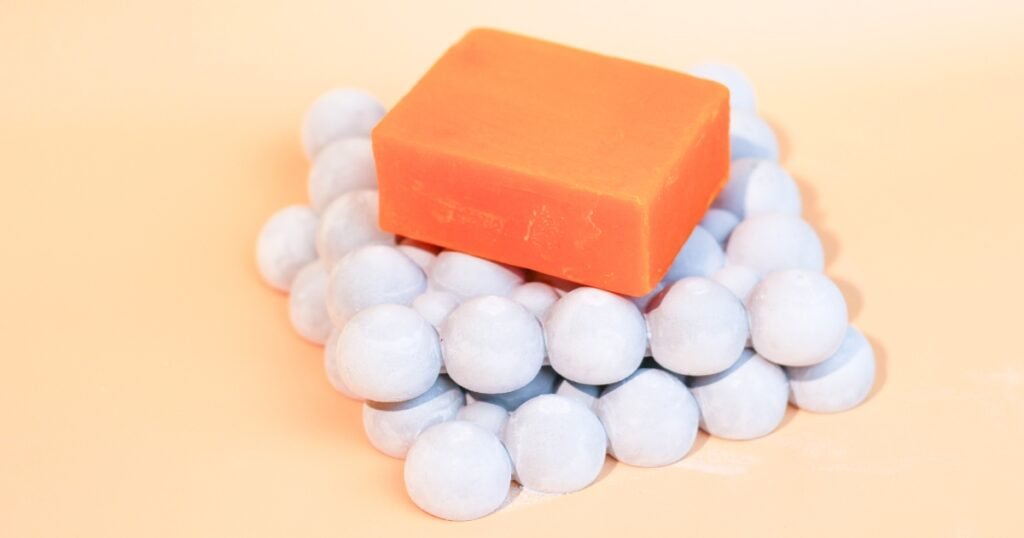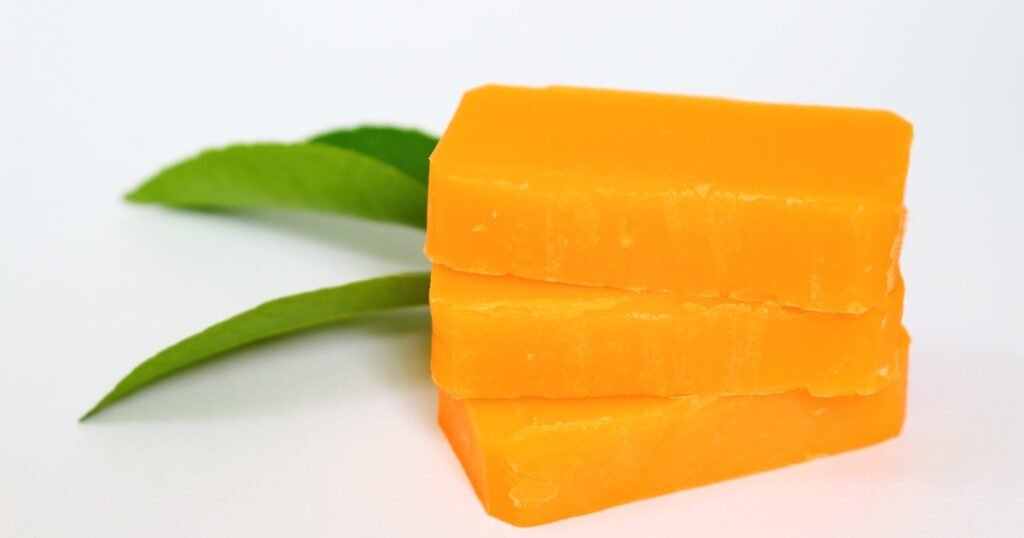Last Updated on 29 August 2024
In the quest for a brighter, more even complexion, many turn to kojic acid, a naturally occurring substance produced by fungi. This ingredient, often lauded for its skin-brightening effects, has become a staple in many skincare routines. While generally safe for various skin types, including sensitive skin, understanding how to add Kojic acid to your skincare routine is critical for maximizing its benefits while minimizing potential risks.
- Understanding Kojic Acid and Its Significance in Skincare
- The Benefits of Incorporating Kojic Acid into Your Routine
- Preparing Your Skin for Kojic Acid
- Step-by-Step Process to Add Kojic Acid to Your Skincare Routine
- Addressing Common Concerns with Kojic Acid Use
- Advancing Your Skincare: Beyond Kojic Acid
- Frequently Asked Questions
- About The Author
Understanding Kojic Acid and Its Significance in Skincare
Kojic acid might sound like something you would find in a chemistry lab, but it’s a natural derivative of certain types of fungi. It’s a by-product of fermentation, similar to how yeast transforms grapes into wine. In the skincare world, kojic acid has gained a reputation for its remarkable ability to lighten and brighten the skin.
So, how does it work? Kojic acid is a champ at inhibiting melanin production, the pigment responsible for giving our skin its color. Melanin can lead to pesky dark spots, uneven skin tone, and acne scars when overproduced. By gently hitting the brakes on melanin production, kojic acid helps create a more even-toned and radiant complexion while also protecting the skin from damage caused by free radicals. This makes it a highly beneficial ingredient for those looking to improve their skin pigmentation.
The Science Behind Kojic Acid
Let’s get a little bit technical about how kojic acid works. Remember tyrosinase? It’s an enzyme that plays a vital role in melanin production. Kojic acid inhibits this enzyme, acting like a melanin production regulator. By interfering with the function of tyrosinase, a key enzyme involved in the synthesis of melanin, kojic acid effectively slows down the formation of melanin in our skin. Additionally, kojic acid has antimicrobial properties, making it a valuable ingredient for reducing breakouts and post-inflammatory hyperpigmentation.
Imagine kojic acid as a gentle referee in a melanin production match. When melanin production ramps up, leading to dark spots or an uneven skin tone, kojic acid blows the whistle and restores balance. It doesn’t wholly halt melanin production—remember, melanin is essential for protecting our skin from the sun—but it helps keep things in check, preventing those frustrating pigmentation irregularities.
This makes kojic acid a particularly helpful ingredient for those struggling with hyperpigmentation issues, which include everything from sunspots and age spots to acne scars and melasma. By addressing the root cause of these concerns, kojic acid helps fade these marks and even out the overall skin tone. Additionally, kojic acid has been shown to stimulate collagen production in the skin, helping to reduce the appearance of fine lines and wrinkles. This makes it a valuable ingredient for anti-aging skincare routines.
Kojic Acid vs. Other Skin Brightening Ingredients
Kojic acid isn’t the only player in the skin-brightening game. Several other popular ingredients, like vitamin C, glycolic acid, and azelaic acid, are also known to tackle pigmentation irregularities. So, how does kojic acid stack up?
Vitamin C, a potent antioxidant, brightens the skin and protects it from environmental aggressors that can contribute to hyperpigmentation. While effective, vitamin C can be less powerful than kojic acid in directly addressing stubborn dark spots.
Then there’s glycolic acid, an alpha-hydroxy acid (AHA) that exfoliates the skin, revealing a brighter complexion underneath. Glycolic acid can be more effective at tackling uneven texture and promoting a general glow, while kojic acid more directly targets specific areas of hyperpigmentation.
Finally, azelaic acid is a gentle yet mighty ingredient that tackles inflammation, acne, and hyperpigmentation. While both are considered safe and effective, azelaic acid might be a better choice for sensitive skin, as kojic acid can be slightly more irritating for some.
The Benefits of Incorporating Kojic Acid into Your Routine
The real magic of kojic acid lies in its ability to transform the skin’s appearance visibly. By reducing hyperpigmentation, kojic acid, in combination with niacinamide, is an effective treatment that helps reveal a brighter, more even-toned complexion that truly glows. Those stubborn dark spots that have been plaguing you? Kojic acid works diligently to fade them over time, revealing clearer and more radiant skin.

The benefits extend beyond just brightening. Thanks to its mild exfoliating action, kojic acid can also improve skin texture, reduce the appearance of acne scars, and promote a smoother, more refined surface. It is like hitting the refresh button on your skin!
How Kojic Acid Enhances Skin Tone and Texture
We’ve talked about brightening, but kojic acid’s superpowers don’t stop there. Remember how we mentioned it has mild exfoliating properties? This means kojic acid gently encourages the shedding of dead skin cells, revealing fresh, healthy skin underneath and reducing the appearance of fine lines. This process is crucial for maintaining a smooth and radiant complexion and preventing skin damage caused by environmental stressors and premature aging.
By sloughing away those dull and dead skin cells, kojic acid helps improve skin texture, making it feel softer and smoother. This exfoliating action can also minimize the appearance of pores and refine the skin’s overall appearance, creating a more even canvas for makeup application.
Ultimately, kojic acid plays a multifaceted role in enhancing skin tone and texture. While it tackles hyperpigmentation to create a more even skin tone, it simultaneously refines the skin’s surface, reducing the appearance of imperfections and leaving behind a healthy, radiant glow.
The Role of Kojic Acid in Reducing Hyperpigmentation and Scars
Hyperpigmentation, often due to sun exposure, hormonal changes, or inflammation, can manifest in various forms, including dark spots, age spots, melasma, and even those stubborn marks left behind by acne. This is where kojic acid steps in as a gentle yet effective solution.
Remember its ability to inhibit melanin production? This is the critical mechanism by which kojic acid targets and reduces hyperpigmentation. By slowing down melanin synthesis in overactive areas, kojic acid helps fade the appearance of dark spots and promote a more even skin tone, reducing the appearance of hyperpigmentation and scars over time.
Scars, particularly those darker than the surrounding skin, can also benefit from kojic acid’s lightening properties. While kojic acid may not wholly erase deep or textured scars, it can help reduce their appearance by lightening their pigmentation, making them less noticeable, and improving the skin’s overall texture.
Preparing Your Skin for Kojic Acid
Before incorporating any new ingredient into your skincare routine, it’s essential to properly prepare your skin to maximize benefits while minimizing potential risks. This is particularly important with kojic acid, as it can sometimes cause sensitivity, especially for sensitive skin.
Think of it like prepping your skin for a first date—you want to make a good impression and ensure everything goes smoothly. That means starting with a clean slate, understanding your skin’s sensitivities, and gradually introducing kojic acid.
Identifying Your Skin Type and Sensitivities
First things first, determine your skin type. Are you prone to dryness, oiliness, or breakouts? Or do you have the coveted balanced skin type? Knowing your skin type will help you choose kojic acid products that align with your needs and minimize the risk of irritation.
Next, understand your skin’s sensitivity level. If you tend to react to new products, proceed with caution. Individuals with sensitive skin may want to start with a lower concentration of kojic acid or use it less frequently to gauge their skin’s tolerance.
The golden rule, particularly for those with reactive skin, is to always perform a patch test before applying any new product to your face. A patch test involves using a small amount of the product on an inconspicuous area (like your inner forearm) and waiting 24 hours to observe for any adverse reactions. If you experience any redness, itching, or irritation, it’s best to discontinue use and seek advice from a dermatologist.
Essential Skincare Preparations Before Using Kojic Acid
Once you’ve assessed your skin type and sensitivity, it’s time to prep your skin for kojic acid. The key here is to start slow and steady. Avoid overwhelming your skin with a high concentration of kojic acid right from the get-go.
Begin by using a small amount of a product with a lower concentration of kojic acid every other day or just a few times a week. As your skin acclimates, you can gradually increase the frequency or concentration, depending on your skin’s tolerance.

Maintaining a healthy skin barrier is paramount when using kojic acid. A compromised skin barrier can leave your skin more susceptible to irritation and dryness. To fortify your skin’s protective shield, incorporate products with ingredients like ceramides, hyaluronic acid, and niacinamide into your routine.
Step-by-Step Process to Add Kojic Acid to Your Skincare Routine
Ready to incorporate kojic acid into your skincare routine? We will guide you through a simple yet effective step-by-step process to help you achieve the best results while minimizing the risk of any potential irritation. Remember, patience and consistency are essential when it comes to kojic acid, so don’t expect overnight miracles.
Think of this as a journey, not a race. By following these steps and paying close attention to your skin’s response, you can safely unlock the brightening and transformative benefits of kojic acid.
Step 1: Performing a Patch Test
Before diving headfirst into the world of kojic acid, always, always, always perform a patch test! This crucial step helps determine if your skin is sensitive to any of the product’s ingredients and prevents a potential full-blown reaction on your face.
To perform a patch test, apply a small amount of the kojic acid product to a discreet area of your skin, such as your inner forearm or behind your ear. Choosing a location that’s not typically exposed to direct sunlight is best. Wait for at least 24 hours, looking closely for any adverse reactions.
Adverse reactions can manifest as redness, itching, burning, or tiny bumps. If you experience any of these symptoms, it indicates that your skin isn’t tolerating the product well, and it’s best to discontinue use. However, if you don’t experience any adverse reactions after 24 hours, you can integrate kojic acid into your routine.
Step 2: Integrating Kojic Acid into Your Evening Routine
Kojic acid can make your skin more sensitive to sunlight, so it’s generally recommended to incorporate it into your evening skincare routine. This allows the product to work its magic overnight, promoting skin renewal and minimizing sun sensitivity.
After cleansing and toning your skin, apply a small amount of the kojic acid product to your entire face. You can also target specific areas of concern, such as dark spots or hyperpigmentation. This step is particularly beneficial for those with dry or normal skin. Gently massage the product into your skin using upward, circular motions. Allow it to absorb fully before applying any other serums or moisturizers.
Remember, less is more when it comes to kojic acid. Starting with a smaller amount allows your skin to get used to the ingredients and minimizes the risk of irritation. Once your skin adapts, you can gradually increase the amount or frequency.
Step 3: Monitoring Skin Response and Adjusting Usage
As with any new skincare ingredient, paying close attention to your skin’s response to kojic acid and adjusting your usage accordingly is crucial. Everyone’s skin is different, and what works wonders for one person might not be suitable for another.
If you notice any signs of irritation, such as redness, itching, or dryness, don’t panic! Reduce the frequency of use to every other day or even a few times a week. You can also try switching to a product with a lower concentration of kojic acid.
On the other hand, if your skin seems to tolerate the product well and you’re not experiencing any adverse reactions, you can gradually increase the frequency of use to once a day or as directed on the product packaging. Communication is key—listen to your skin’s cues and adjust your kojic acid usage accordingly for optimal results. Be sure also to follow the recommended product instructions, including the frequency of use and any precautions or warnings.
Step 4: Combining Kojic Acid with Sunscreen in the Morning
Sunscreen is a must-have in any skincare routine, but it becomes even more crucial when using kojic acid. Kojic acid can increase your skin’s sensitivity to the sun, making it even more susceptible to sunburns, hyperpigmentation, and other forms of sun damage.
Therefore, diligently applying a broad-spectrum sunscreen with an SPF of 30 or higher every morning is non-negotiable. Look for a sunscreen that protects against UVA and UVB rays and apply it generously to all exposed skin, even on cloudy days.
Think of sunscreen as your invisible shield against the harsh effects of the sun, while kojic acid works its magic on dark spots and uneven skin tones. By pairing these two skincare heroes, you’ll protect your skin from future damage and enhance the effectiveness of your brightening efforts.
Tips for Enhancing Kojic Acid Efficacy
One of the most essential tips for maximizing the benefits of kojic acid is to be patient and consistent with its use. Remember, kojic acid isn’t a quick fix; it gradually inhibits melanin production and fades those stubborn dark spots over time.
Don’t get discouraged if you don’t see dramatic results overnight. Consistent use is key! Integrate kojic acid into your skincare routine, morning or night, and make it a non-negotiable step, like brushing your teeth.
Think of it this way: you wouldn’t expect to see a six-pack after just one day at the gym, right? Similarly, achieving those coveted results with kojic acid takes time, dedication, and consistency. Stay diligent, and you will eventually reap the rewards of a brighter, more even-toned complexion.
Long-term Management and Maintenance
Maintaining the results you have achieved with kojic acid requires a long-term approach that combines continued use with other essential skincare practices. Relying on kojic acid alone is not enough; a holistic skincare regimen focused on skin health and protection is crucial.

Once you have reached your desired level of pigmentation reduction, you can switch from daily use to a maintenance routine. This might involve using a kojic acid product a few times a week or alternating it with other brightening ingredients like vitamin C or niacinamide.
Remember, prevention is always better than cure. Incorporate habits like wearing sunscreen daily, seeking shade when the sun is at its peak, and wearing protective clothing to minimize future sun damage and keep those pesky dark spots at bay.
Addressing Common Concerns with Kojic Acid Use
While generally considered safe for most skin types, kojic acid, like any active skincare ingredient, can have potential side effects. The good news is that these side effects are usually mild and manageable.
Understanding these potential side effects and how to address them can make your kojic acid journey smoother and more enjoyable, ensuring you achieve those skin-brightening goals without any unwanted surprises.
Managing Potential Side Effects
The most common side effect of using kojic acid is skin irritation. This can present as redness, itching, dryness, or a mild burning sensation. If you experience any of these symptoms, don’t worry! You can do a few things to manage and minimize these effects.
First, try reducing the frequency of use or opting for a lower concentration. Consider using the product every other day instead of daily or switching to a formulation that contains a lower percentage of kojic acid, usually around 1%. This gives your skin a chance to acclimate to the ingredients gradually.
Incorporating other soothing and hydrating ingredients into your routine can help combat dryness and potential irritation. Look for products that contain hyaluronic acid, ceramides, or aloe vera, which are known for their calming and moisturizing properties.
When to See a Dermatologist
While mild irritation is common and usually subsides with adjusted usage, it’s important to recognize when it’s time to seek professional help from a dermatologist. If you experience severe or persistent adverse reactions to kojic acid, such as intense burning, stinging, or inflammation, it’s best to schedule an appointment with a dermatologist immediately.
A dermatologist can assess your skin’s condition, determine the severity of the reaction, and provide personalized advice on how to manage the situation. In some cases, they might recommend discontinuing the use of kojic acid altogether and suggesting alternative treatments or ingredients that address your skin concerns without causing adverse reactions. If you have a pre-existing skin condition, it is essential to consult a dermatologist before incorporating active ingredients such as kojic acid into your skincare routine. They can advise you on the best products and frequency of use for your skin type and condition.
Remember, dermatologists are skincare experts equipped with the knowledge and experience to guide you on your skincare journey and ensure you achieve your desired results safely and effectively.
Advancing Your Skincare: Beyond Kojic Acid
While kojic acid can undoubtedly be a game-changer for those seeking a brighter, more even complexion, the skincare world is vast. It’s filled with many other fascinating ingredients and innovative techniques to take your skincare routine to the next level.
Beyond the realm of kojic acid lies a fascinating world of complementary ingredients and groundbreaking technologies that can synergistically enhance your skin’s radiance and address various concerns.
Complementary Ingredients for Kojic Acid
Combining kojic acid with other powerful ingredients can create a synergistic effect, enhancing its effectiveness and addressing multiple skin concerns simultaneously. Remember vitamin C? This antioxidant powerhouse protects against environmental damage and complements kojic acid’s brightening abilities, creating a double whammy against hyperpigmentation.
Then there’s hyaluronic acid, the queen of hydration. Incorporating hyaluronic acid into your routine can counteract any potential drying effects of kojic acid, ensuring your skin stays plump, hydrated, and happy.
Other complementary ingredients include niacinamide, which reduces inflammation and improves skin barrier function, and alpha-hydroxy acids (AHAs) like glycolic acid, which gently exfoliate to reveal brighter, smoother skin.
Future Trends in Skincare With Kojic Acid
The beauty industry constantly evolves, with innovative technologies and ingredients emerging continually. So, what does the future hold for kojic acid? Experts predict we’ll see more sophisticated formulations and delivery systems that enhance its effectiveness and target specific skin concerns with even greater precision.
Imagine kojic acid combined with cutting-edge encapsulation technologies that allow for a slow and sustained release of the active ingredients, ensuring optimal absorption and minimizing irritation. Or perhaps we’ll see kojic acid incorporated into smart skincare devices that personalize treatment based on individual skin needs.
As research and technology continue to advance, we can expect to see even more groundbreaking innovations that unlock the full potential of kojic acid, paving the way for a brighter, more radiant future for our skin.
Incorporating Kojic Acid into your skincare routine can work wonders for your skin. Its benefits are undeniable, from enhancing skin tone and texture to reducing hyperpigmentation and scars. Remember to begin with a patch test and gradually integrate it into your evening and morning routines. Monitor your skin’s response, and always use sunscreen during the day. To optimize results, follow essential skincare preparations and long-term management strategies. Address any concerns by managing potential side effects and seeking advice from a dermatologist. Looking ahead, explore complementary ingredients and emerging trends in skincare beyond Kojic Acid. If you’re eager to learn more, check out our detailed guide on advancing your skincare regime!









